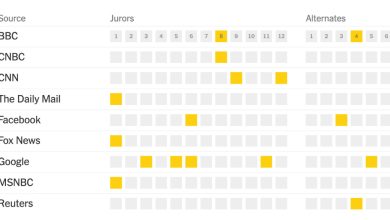What Is Day of the Dead, the Mexican Holiday?

MEXICO CITY — Day of the Dead, or Día de Muertos, is one of the most important celebrations in Mexico, with roots dating back thousands of years, long before Spanish settlers arrived. It has become a blend of Catholic tradition and Mexican mysticism, commemorating death as another element of life and as a way to remember and honor loved ones.
In bustling markets, stalls sell decorated skulls made of sugar or chocolate, while tissue paper, cut into delicate shapes, adorns stores and restaurants. In houses all over the country, families carefully place photographs of their ancestors on an altar beside candles and a traditional Mexican pastry, as incense fills the air. In flower shops, freshly cut marigolds line the storefronts.
The holiday is a rich and complex tradition that has increasingly infiltrated popular culture the world over.
When is Day of the Dead?
It is observed on Nov. 2, when all souls of the dead are believed to return to the world of the living. But the celebration typically begins on Oct. 28, with each day dedicated to a different kind of death: people who died in accidents or children who died before being baptized, for example. All Saint’s Day, on Nov. 1, honors anyone who led a pure life, particularly children.
Who celebrates Day of the Dead?
It is primarily a Mexican tradition, but other Catholic countries around the world also honor the deceased. In the Philippines, relatives visit the graves of the dead, bringing flowers and lighting candles. In Brazil, there is Dia de Finados. And in many other countries, including the United States, Nov. 2 is similarly recognized as All Souls’ Day, when Catholics remember and pray for the dead.
Where did Day of the Dead originate?
The holiday has its origins in Indigenous cultures dating back thousands of years, particularly influenced by the Aztec or Mexica people.In Aztec culture, death was transitory, and the souls of the dead could return to visit the living. At least two important festivals in the fall would celebrate the dead and invite them back to the world of the living. After the Spanish arrived in the 16th century, those traditions were melded into the Catholic calendar, and are now celebrated to coincide with All Souls’ Day.
How is Day of the Dead celebrated?
Celebrations vary by region, but some elements tend to be universal. People typically place photos of deceased loved ones at an ofrenda, or an altar, along with their favorite food or drink. In some parts of the country, like Morelos state, families open their doors to anyone interested in viewing the altar, offering them food like pan de muerto, a traditional Mexican pastry, and atole, a drink made from corn. On Nov. 2, many head to cemeteries to place flowers, candles and other offerings at graves.
As the tradition’s global popularity has grown, particularly with Hollywood films like “Coco” and “The Book of Life,” festivities have become larger and more elaborate.
After the 2015 James Bond film “Spectre” featured an elaborate Day of the Dead parade snaking through downtown Mexico City, officials held a real-life version, which included dancers in bright costumes and floats with images of giant skulls. The parade has since become an important tourist attraction for the capital, with 2.6 million attending in 2019.
In the United States, cities with large Mexican populations like Los Angeles, Chicago and San Antonio also hold celebrations, including parades, exhibitions and street fairs.
What items are placed on an altar?
Altars normally have multiple levels: Two levels symbolize the earth and the sky, three levels can represent heaven, earth and purgatory, while seven levels signify the seven steps to enter the afterlife, or the seven deadly sins.
Every ofrenda includes items meant to correspond to the four elements: earth, water, air and fire. Ashes or dirt typically stand in for earth. A glass of water lets the spirits quench their thirst after a long journey, and tissue paper carved with elaborate motifs is commonly used to represent air. Candles signify fire, helping guide the dead home.
.
Altars also often feature small skulls made of sugar or chocolate, as well as pan de muerto, a pastry with a pair of crossed bones on top covered in sugar. For altars to children, some place a small toy dog while a woven rug offers souls a place to rest.The favorite food, drink or other items beloved by the dead are important, too, as well as copal, a kind of incense to cleanse the space.
Which flowers symbolize the Day of the Dead?
The most important flower is the marigold, though its meaning varies. Its bright yellow petals are said to represent the sun and act as a guide for the souls of the dead to return home. Other significant flowers include white baby’s breath, which can stand for purity, as well as the bright red velvet flower, which often add a splash of color to ofrendas.



